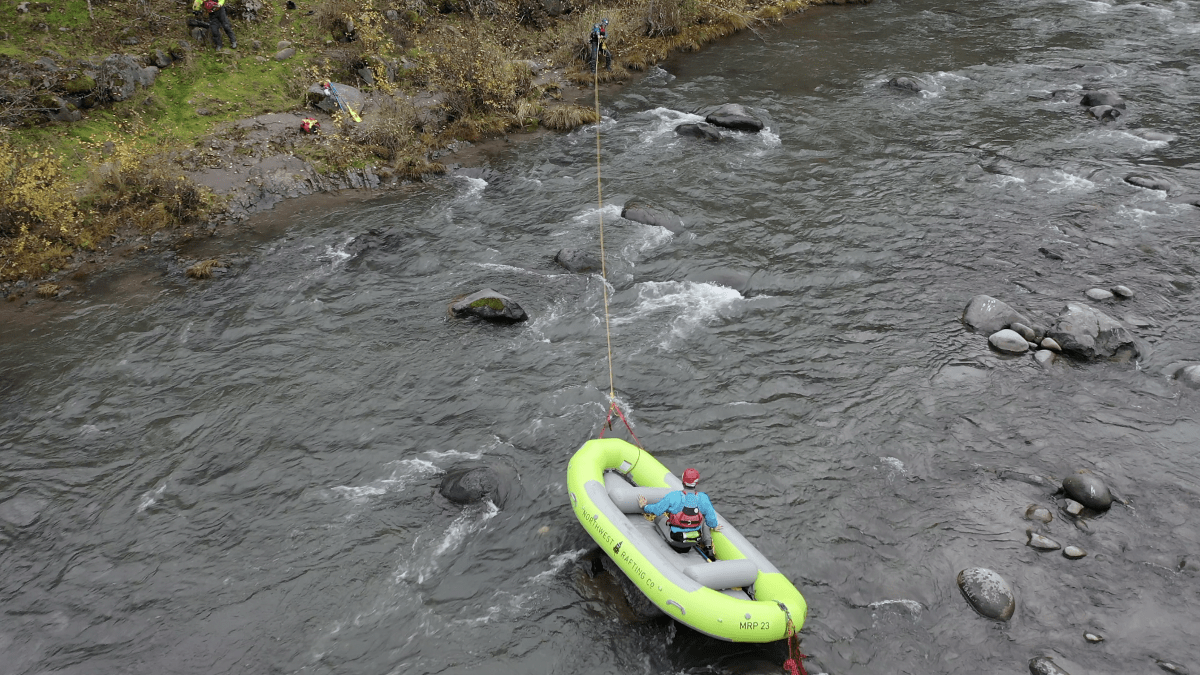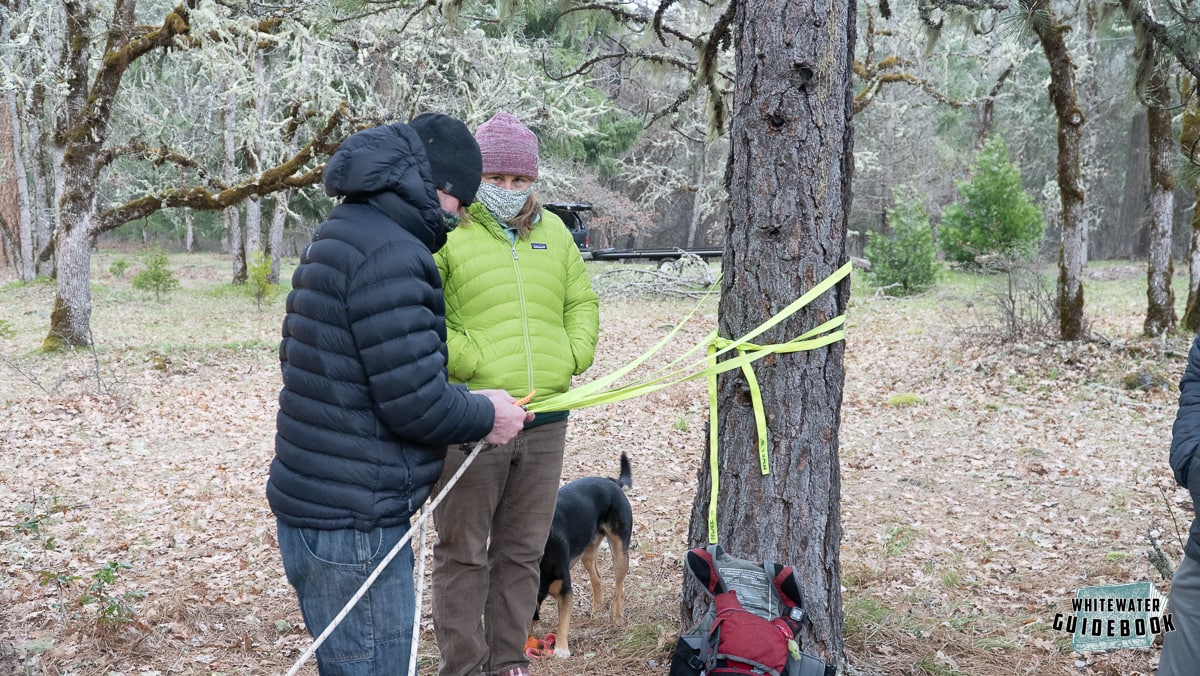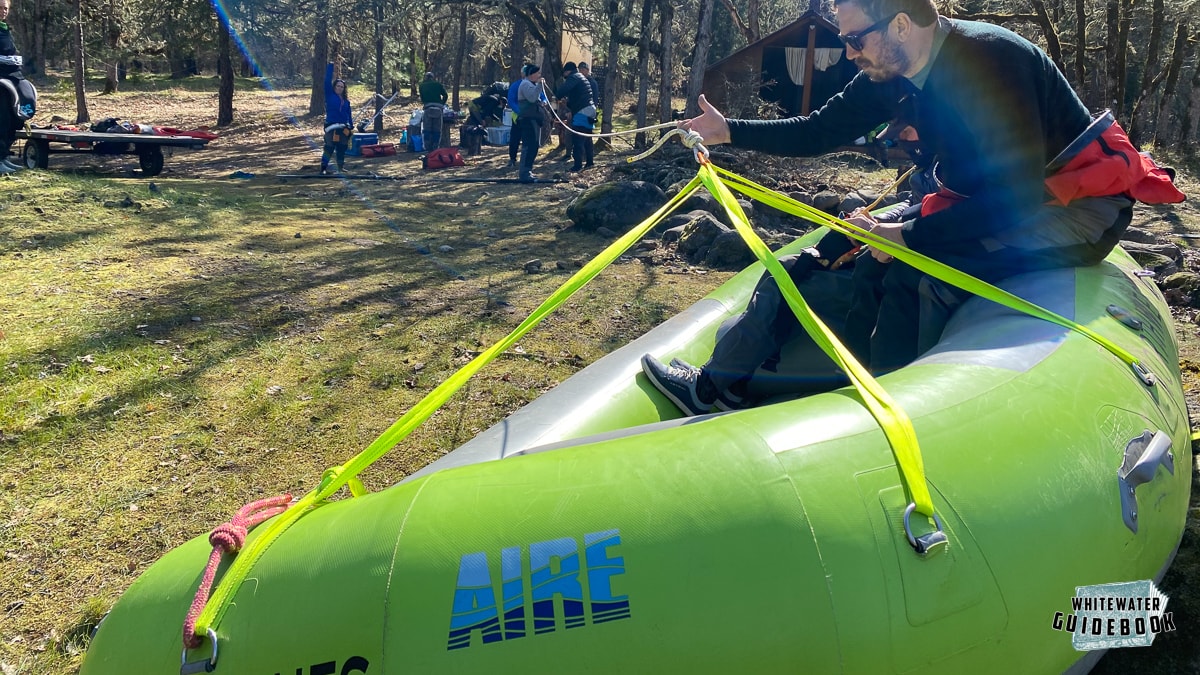Pro Tip: Anchors
Your boat is really stuck on a rock, in the middle of a huge rapid, you are calm and relaxed, and start to form a plan. You move some gear, jumped around, and things don't seem like they are going to move. Looks like you might get a rope involved and try pulling. You will have to build a solid anchor on your boat to hopefully get things moving. Are you ready?

Anchor From Boat To Shore
ERNEST
When building an anchor I like to think of ERNEST. These principals of anchor building can help you quickly build a really solid anchor on your boat or land.
E - Equalized - The load is distributed somewhat equally among the individual anchors, so the final rigged anchor achieves maximum strength.
R - Redundant - All components of the anchor are backed up, so any single failure does not result in a catastrophe
NE - No Extension - If any anchor fails, extension in the rigging material is minimized to protect the remaining anchor(s) from receiving a higher impact load.
S - Solid/Simple - Each component and the overall system need to be solid for the situation. Also the more simple the set-up is the easier people will recognize what you have going.
T - Timely - Building an anchors that is efficient
Self-equalizing
When first pulling on the rope, nothing may happen. You may need to move around and try pulling from a different angle. Setting up your anchor to be self-equalizing will help reduce the strain on one side of your anchor if you need to change where you are pulling from. This is easy to do, and requires one little twist in your wedding before adding your carabiner.
Land Anchors
In the event you need a anchor on land for some mechanical advantage it can be pretty simple. In short, you are looking for big to tie to. Rocks and trees are typically what you will find another the river. Whatever you choose make sure it is really stable. A huge rock and quick start moving when it is on uneven ground. If there are trees around is tends to be best to pick one that is still alive. If you go with a old stump really check it out and make sure is it stable as well. An anchor can be as simple as tying your webbing on a big loop around the object. Check out Dustin teaching you about some more options.

Tree Anchor
Two-Point
A great place to start is a 2-point, self equalizing anchor, with a long piece of webbing tied together with a water knot. Every situation is different, every boat is different so there is no set in stone place to on your boat to use. D-rings work really well, your frame is another great place to start. Keep in mind you are looking for something strong, and easy to access. I like to keep my friend ERNEST in mind. Want to make you anchor a little strong? Make sure you webbing is long enough and incorporate another D-ring.
Angle
When setting up an anchor it is important to notice the angles made by your attachment points and where you will be pulling from (often called the master point). This angle is important because it plays a key role in how much force each side of the anchor takes on. If one breaks, the other takes on all the load and may cause the entire anchor to fail. Keeping a small angle you are reducing the force each part of the anchor takes.

3 Point Anchor with low angles
Keeping the angle small can be tricky. It requires your anchor points to be close together, or long enough webbing to move the master point farther away. You are looking to keep your angle small, and no larger than 90 degrees. As the angle grows, the force on each piece of the anchor grows as well. Past 90 degrees forces start to double, triple, and can quickly lead to unsafe numbers.
Efficient
Building an anchor doesn't need to hard, confusing, or complex. Make sure your kit has webbing of at least 20' pieces so you aren't tying a bunch of small pieces together. Make sure you can tie a water knot and a figure eight on a bite. Keep your rescue kit clutter free. All of this will help you set up an anchor on land or on your raft with ease.
Get out and practice building different types of anchors. As you float down your favorite stretch of river take note of where you may need to build anchors. Take note of what might make things difficult, whether it is be lack of trees, distance from shore to places people might get stuck, or even lack of space to work on shore. Being prepared for rescue situations can make a big difference.




